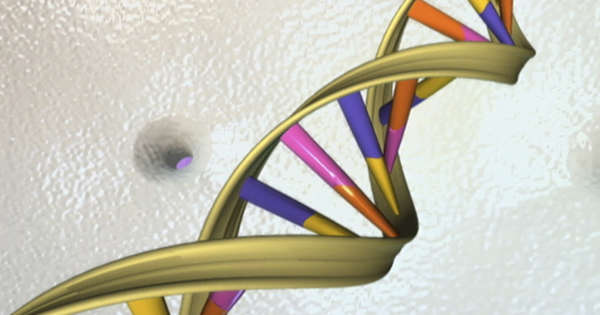[ad_1]
© (photo credit: REUTERS/NATIONAL HUMAN GENOME RESEARCH INSTITUTE/HANDOUT)
A DNA double helix is seen in an undated artist
Unlike “junk email” that is automatically deleted from the email box, “junk DNA” continues to exist in living creatures like as bacteria, insects, mammals and even us humans, alongside the original genome – thus the genome grows throughout evolution.
A new model developed at Tel Aviv University (TAU) offers a possible solution to the scientific question of why neutral sequences referred to as junk DNA are not eliminated from the genome of living creatures in nature and continue to exist within it even millions of years later.
The researchers’ explanation is that it hides in functional areas, so deletions are likely to damage the functional DNA and therefore are rejected by evolution.
According to the researchers, junk DNA is often located in the vicinity of functional DNA. Deletion events around the borders between junk and functional DNA are likely to damage the functional regions and so evolution rejects them. The model contributes to the understanding of the huge variety of genome sizes observed in nature.
Border-induced selection
The phenomenon that the new model describes, called by the team “border-induced selection” – was developed under the leadership of the doctoral student Gil Loewenthal in the lab of Prof. Tal Pupko from the Shmunis School of Biomedicine and Cancer Research at TAU’s Faculty of Life Sciences and in collaboration with colleague Prof. Itay Mayrose. The study was published in the journal Open Biology under the title “The evolutionary dynamics that retain long neutral genomic sequences in face of indel deletion bias: a model and its application to human introns.”

© Provided by The Jerusalem Post
Prof. Tal Pupko (credit: TEL AVIV UNIVERSITY)
Prof. Tal Pupko (credit: TEL AVIV UNIVERSITY)
“The question we tried to answer is how the genomes are not deleted when the probability of DNA deletion events is significantly greater than DNA addition events.”
Prof. Tal Pupko, TAU Shmunis School of Biomedicine and Cancer Research
The Human Genome Project, completed exactly two decades ago, covered about 92% of the total human genome sequence. Junk DNA was found but not well understood. The technologies to decipher the gaps that remained didn’t exist at the time. But scientists knew that the last eight percent likely contained information important for fundamental biological processes.
The researchers explain that throughout evolution, the size of the genome in living creatures in nature changes. For example, some salamander species have a genome ten times larger than the human genome. “The rate of deletions and short insertions, which are termed in short as indels, is usually measured by examining pseudogenes,” Pupko explained. “Pseudogenes are genes that have lost their function and in which there are frequent mutations, including deletions and insertions of DNA segments. In previous studies that characterized the indels, it was found that the rate of deletions is greater than the rate of additions in a variety of creatures including bacteria, insects, and even mammals such as humans. The question we tried to answer is how the genomes are not deleted when the probability of DNA deletion events is significantly greater than DNA addition events.”
Loewenthal added that “we have provided a different view to the dynamics of evolution at the DNA level. When measuring the rate of indels, there will be more deletions, but the measurements are carried out in pseudogenes that are quite long sequences. We claim that in shorter neutral segments, deletions are likely to delete adjacent functional segments which are essential for the functioning of the organism, and therefore will be rejected. If so, when the segment is short, there will be a reverse bias so that there will be more insertions than deletions, and therefore short neutral segments usually are retained.”
The team simulated the dynamics of indels while taking into account the effect of border-induced selection and compared the simulation results to the distribution of human intron lengths (introns are DNA segments in the middle of a protein-coding gene, which themselves do not code for a protein). A good match was obtained between the results of the simulations and the distribution of lengths observed in nature, and we were able to explain peculiar phenomena in the length distribution of introns, such as the large variation in intron lengths, as well as the complex shape of the distribution which does not look like a standard bell curve.”
[ad_2]

